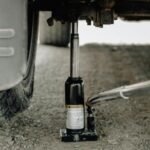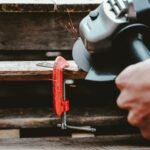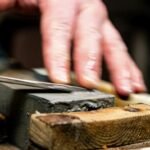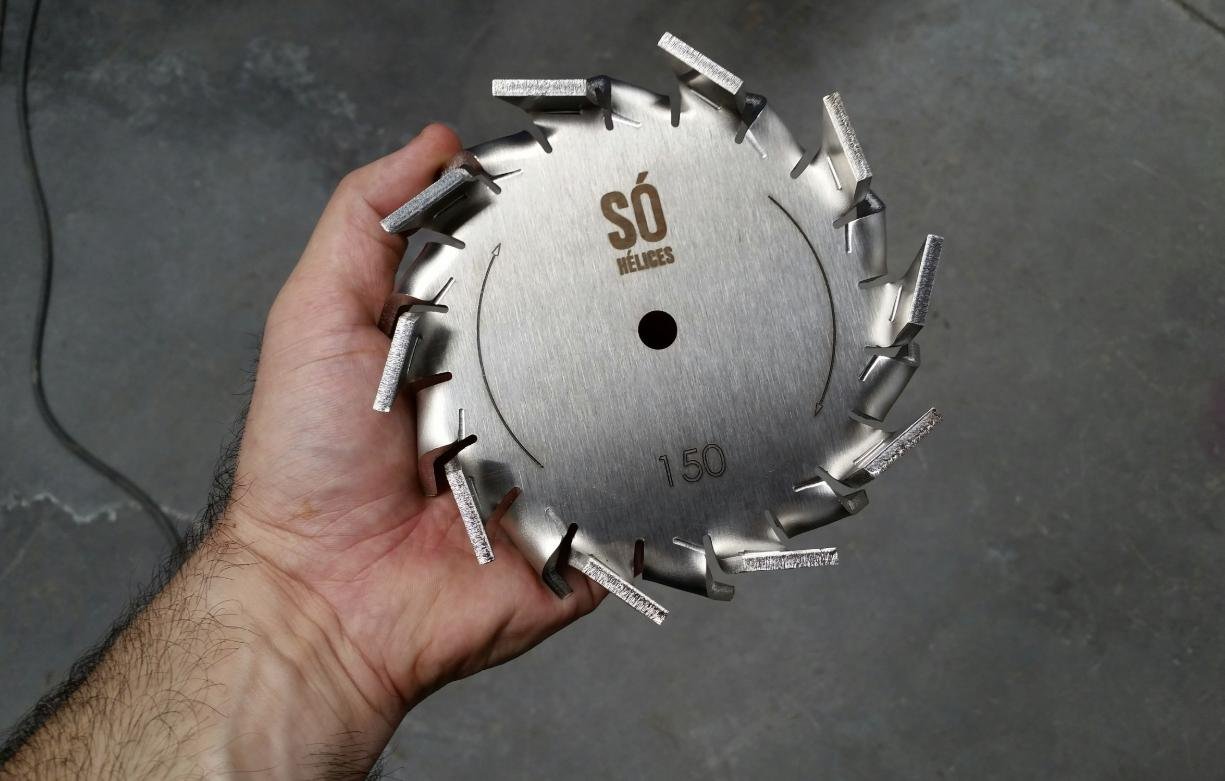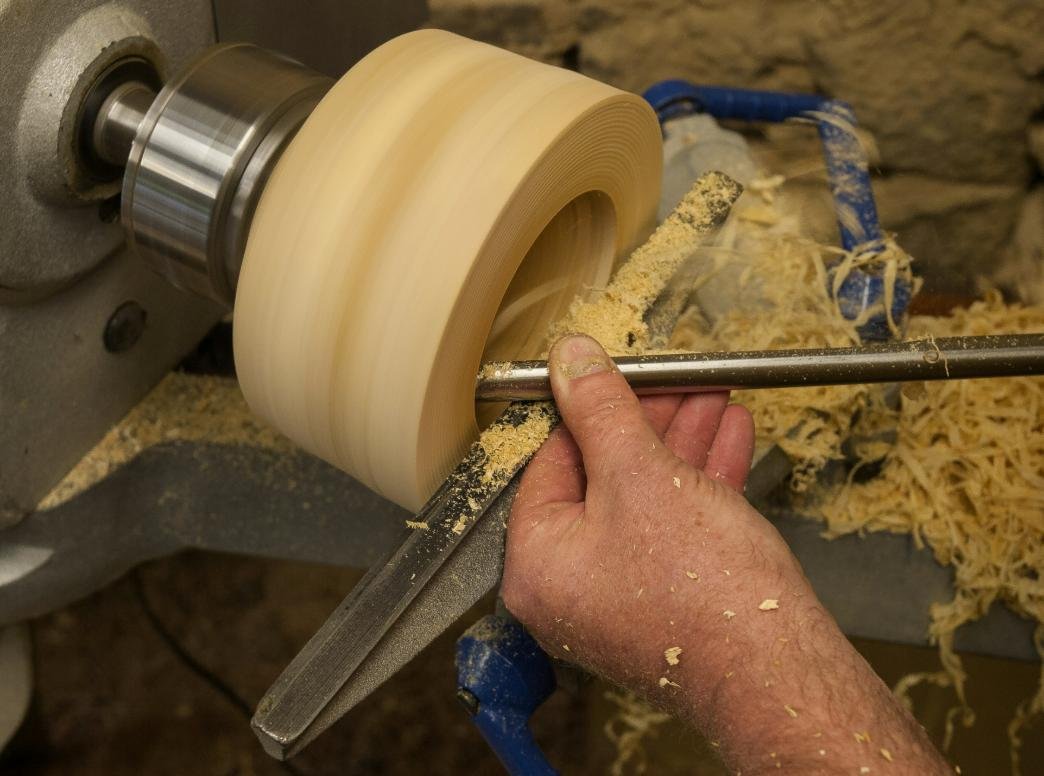Introduction to Scroll Saw Blades
A scroll saw blade is an essential component used in scroll saws, which are specialized tools designed for intricate cutting of wood and other materials. These blades allow woodworkers and hobbyists alike to create detailed designs and patterns that would be challenging to achieve with other cutting tools. Typically, scroll saws are utilized in various woodworking and crafting applications, such as creating decorative items, puzzles, and intricate inlays. The precision and finesse provided by scroll saw blades make them a popular choice in fine woodworking and craftsmanship.
Scroll saw blades come in various types, each designed for specific tasks and materials. For instance, blades can be categorized by their tooth configuration – there are blades with fine teeth suitable for detailed work, as well as larger-tooth blades designed for faster cuts through thicker materials. Additionally, the material composition of the blade can vary; some blades are created from high-speed steel (HSS), while others may be constructed from carbide, each offering different benefits in terms of durability and performance.
Choosing the right scroll saw blade is paramount for achieving optimal results in any project. Factors such as the type of material being cut, the thickness of the workpiece, and the desired intricacy of the design all play a crucial role in blade selection. For instance, a finer blade is essential for cutting delicate curves, while a thicker blade may be more effective for straight cuts through hardwood. Understanding the different types of scroll saw blades and matching them with the appropriate materials and project requirements is key to ensuring both longevity and efficiency throughout the cutting process.
Factors Affecting the Lifespan of Scroll Saw Blades
The longevity of scroll saw blades is influenced by several factors that can significantly affect their performance and durability. Understanding these factors can aid woodworkers in maximizing the lifespan of their blades, ensuring efficient and consistent results in their projects.
One of the primary factors is the type of material being cut. Different materials, such as hardwood, softwood, or composite, can place varying degrees of stress on the blade. Harder materials typically require more effort and can cause increased wear, while softer woods may be easier on blades. The thickness and density of the material can also impact blade longevity, as denser materials tend to accelerate wear.
Another crucial aspect is the frequency of use. Blades that are used frequently may experience a shorter lifespan due to continual exposure to friction and heat. Conversely, infrequent users may find that their blades last longer, but they should still be aware of the effects of storage conditions. Humidity and temperature variations can lead to oxidation and damage, even if the blade is not in active use.
The speed settings on the scroll saw also play a significant role in blade wear. Higher speeds can create greater friction, leading to overheating, while lower speeds might not adequately cut through the material, forcing the blade to work harder. It is essential for users to adjust their speed settings based on the material and thickness being cut to optimize the blade’s performance.
Lastly, the quality of the blade itself cannot be overlooked. Higher-quality blades are typically manufactured with superior materials, leading to better durability and cutting efficiency. Furthermore, common mistakes, such as improper blade installation, using the wrong type of blade for the job, or neglecting maintenance can contribute to premature wear.
Types of Scroll Saw Blades and Their Durability
Scroll saw blades play a crucial role in the cutting precision and overall success of projects. There are several types of scroll saw blades, each designed for specific cutting tasks, and understanding their durability is vital for selecting the right blade for particular applications. The principal types include plain-tooth, skip-tooth, and reverse-tooth blades.
Plain-tooth blades consist of a uniform tooth design, allowing for smooth and clean cuts. They are ideal for cutting softer materials such as wood or plastic. While their design makes them efficient for straight cuts and gentle curves, they may experience faster wear compared to other blade types when used on harder materials. Regular use on hard woods may blunt the teeth quicker, so users should expect to replace these blades relatively often in demanding projects.
Skip-tooth blades incorporate spaced-out teeth, which enhance their ability to clear sawdust from the cutting line. This feature makes them suitable for intricate cuts and thicker materials. Their design allows for faster cutting speeds; however, this may come at the cost of a smoother finish. When used correctly, skip-tooth blades can retain their sharpness longer than plain-tooth blades, making them a durable option for projects requiring rapid and efficient cutting.
Reverse-tooth blades have teeth that face both upward and downward, significantly reducing tear-out on the material’s surface during the cutting process. They are particularly advantageous for intricate work on sensitive woods or veneers. Despite their versatility and durability, reverse-tooth blades tend to be slightly more fragile than the other types, especially when used extensively on tougher materials. Choosing the appropriate blade type based on the specific project requirements can greatly enhance cutting accuracy and longevity.
Signs of Blade Wear and When to Replace
Understanding the longevity of a scroll saw blade is essential for maintaining optimal performance during projects. One of the primary indicators of a blade’s wear is a noticeable decline in cutting performance. As blades dull over time, they may struggle to slice through materials smoothly. Instead of producing clean cuts, you might notice jagged edges or uneven surfaces, signaling that the blade requires replacement.
Another significant sign of wear is the presence of vibration during operation. A well-functioning scroll saw blade operates smoothly, but as it begins to dull, it can lead to pronounced vibrations or erratic movements. These vibrations not only affect the quality of the cut but can also pose safety risks by making the saw more difficult to control. If you experience such disturbances, it is advisable to inspect the blade promptly.
Additionally, if you observe an increase in friction or resistance while making cuts, it is likely that the blade has become worn. This change can result in overheating, which further accelerates blade deterioration and can damage the scroll saw itself. Regular maintenance and monitoring of the blade’s condition are crucial to prevent such complications.
Another common indicator is the accumulation of debris or material buildup on the blade. If you find that the blade becomes clogged quickly or requires frequent cleaning, this may suggest that it has dulled and is no longer cutting effectively. Timely replacement of the scroll saw blade is paramount not only to preserve the quality of your work but also to extend the life of your scroll saw. By recognizing these signs of wear, you can maintain both the efficiency of your tool and the quality of your projects.
Tips for Extending the Life of Scroll Saw Blades
To maximize the lifespan of your scroll saw blades and maintain optimal performance, it is essential to adopt effective care and maintenance practices. Implementing a few straightforward strategies can significantly reduce the risk of premature wear, ensuring that your blades perform efficiently over time.
Firstly, proper storage of scroll saw blades is crucial. Store blades in a dry environment, free from excessive moisture that can cause rust and deterioration. Consider using blade guards or protective cases to prevent physical damage during storage. Avoid keeping blades in direct sunlight where temperature fluctuations can lead to warping.
Regular cleaning is another important aspect of extending scroll saw blade life. Dust, resin, and debris can accumulate on blades during use, leading to reduced cutting efficiency and increased wear. After each session, take the time to clean the blades using a soft brush or cloth. For more stubborn residues, a solution of soapy water can be used, followed by thorough drying to prevent moisture-related issues.
Using the right cutting techniques plays a pivotal role in prolonging the life of your scroll saw blades. Always ensure the material being cut is properly secured to avoid unnecessary stress on the blade. Additionally, adjust the speed settings of your scroll saw according to the material type; cutting too fast can lead to overheating and premature blade wear. Opting for blades designed for specific materials will also contribute significantly to blade longevity.
Finally, regular inspection of your scroll saw blades is vital. Look for signs of wear such as dullness, bending, or cracking. If you notice any of these issues, it may be time to replace the blade to maintain performance and precision in your projects. By implementing these tips, users can effectively extend the life of their scroll saw blades, enhancing overall cutting efficiency and effectiveness.
Comparison of Blade Lifespan in Different Materials
When it comes to scroll saw blades, the materials being cut significantly influence their lifespan and performance. Understanding how different materials affect blade longevity can assist in ensuring optimal productivity and minimizing costs. Generally, scroll saw blades are designed for specific materials, and their lifespan may vary considerably based on the material’s hardness and density.
Starting with hardwood, which includes species such as oak and maple, scroll saw blades tend to wear down more rapidly. The denser structure of hardwood necessitates a blades’ sharpness to perform effectively, often resulting in a lifespan ranging from one to several hours of cutting, depending on the intricacy of the cuts and the thickness of the material. For hardwood cutting, using high-speed steel (HSS) or bi-metal blades can enhance longevity as they are equipped with heat and wear resistance.
In the case of softwood, such as pine or fir, the story is different. These materials are typically easier to cut, which allows scroll saw blades to last longer, often extending their lifespan to between five to ten hours, based on the blade type used. For optimum results with softwoods, spiral or skip-tooth blades are recommended, as they prevent clogging and improve cutting efficiency.
Acrylic is another common material among woodworkers. Cutting acrylic requires special care, as the wrong type of blade can result in chipping or melting. Selecting blades specifically designed for plastics can prolong their lifespan to around three to five hours during thorough cutting sessions. Additionally, using blades with finer teeth will reduce the risk of damaging the material.
Lastly, when cutting metal, such as aluminum or thin steel, lifespan considerations vary widely. Metal-cutting blades, typically made from high-carbon steel or bi-metal, can last significantly longer than those for other materials, reaching up to twenty hours depending on the thickness of the metal. Proper use of lubricant and slower cutting speeds can also help maintain blade integrity.
In summary, the longevity of scroll saw blades greatly depends on the material being cut, with each requiring specific blade types optimized for performance and durability. By selecting the correct blade for each material, users can achieve maximum cutting efficiency and extend the lifespan of their scroll saw blades considerably.
Maintenance Practices for Scroll Saw Blades
Proper maintenance practices are essential for extending the longevity and performance of scroll saw blades. Routine inspections should be incorporated into regular woodworking sessions to identify signs of wear or damage. Users should carefully examine the blade for any nicks, cracks, or dullness, as even minor issues can affect cutting accuracy and efficiency. Checking the tension of the blade is also crucial; a properly tensioned blade reduces the risk of breakage and enhances the quality of the cuts.
Cleaning is another vital aspect of maintaining scroll saw blades. Dust and resin build-up can cause blades to dull more quickly and can affect the precision of cuts. Users should clean their blades after each session by using a soft brush or cloth to remove debris. It’s also advisable to periodically soak the blades in a solution of warm water and mild detergent to eliminate built-up pitch or grime. Rinsing and thoroughly drying the blades afterward will prevent rusting and prolong their usability.
Additionally, aligning the blades correctly before starting work will contribute to optimal performance. Misaligned blades can lead to uneven cuts and increased wear on the blade itself. To ensure proper alignment, users should follow the manufacturer’s instructions and make necessary adjustments to the blade guide and arm. Proper blade alignment, together with consistent tensioning and regular inspections, will significantly improve the lifespan of the scroll saw blades.
Incorporating these maintenance practices into your woodworking routine will not only enhance the life of your scroll saw blades but also improve the overall quality of your projects. By attending to these details, users can maximize the effectiveness of their scroll saws and enjoy the crafting experience with fewer interruptions.
Cost-Effectiveness: Blade Longevity Versus Frequency of Replacement
When engaging in scroll saw projects, one must evaluate the cost-effectiveness of blade options available in the market. Selection between high-quality blades and their less expensive counterparts often leads to a significant difference in performance and longevity. High-quality scroll saw blades, though initially more costly, typically demonstrate superior durability and sharper cutting capabilities. This extended lifespan can greatly reduce the frequency of replacements needed, presenting a beneficial financial perspective over time.
For instance, a premium blade may be more expensive upfront, but if it lasts significantly longer than a budget blade, the cost per use becomes remarkably lower. Cheaper blades often require more frequent changes due to faster wear and tear, which can lead to increased expenditure on replacements. These factors contribute to the overall cost analysis. When opting for quality, one must consider not only the price of the blade but also its longevity and efficiency, which directly correlate with productivity and output quality.
Additionally, opting for high-quality blades can mitigate potential issues such as increased stress on the scroll saw and lower quality cuts. High-performance blades also enhance user experience by reducing frustration associated with frequent breaks or dull edges. Therefore, although initial costs may be higher, the long-term benefits of investing in quality blades justify the expense, especially for avid woodworkers or professionals who rely heavily on their equipment for ongoing projects.
In conclusion, while the initial investment in premium scroll saw blades may seem daunting, the real cost-effectiveness lies in their longevity and reduced frequency of replacements. By making a thoughtful choice regarding blade quality, woodworkers can achieve not only superior results but also significant savings in the long run.
Conclusion: Making Informed Decisions on Scroll Saw Blades
In conclusion, understanding the longevity and performance of scroll saw blades is essential for anyone utilizing this valuable tool. Throughout this blog post, we explored several key factors that influence the lifespan of scroll saw blades, including blade material, thickness, and the type of projects undertaken. By selecting the right blade type and considering the material it is made from—such as high-speed steel or carbide—woodworkers can achieve both enhanced performance and extended durability.
Another critical aspect discussed is the significance of proper maintenance and care in prolonging blade life. Regular inspections of the blade for wear and tear, as well as ensuring proper tensioning during use, can prevent premature degradation. Employing the correct sawing techniques, such as using adequate feed rates and appropriate speed settings, further contributes to the overall effectiveness of the scroll saw blades.
Moreover, it is important to note that the conditions under which one operates a scroll saw can greatly affect blade longevity. Factors such as humidity, temperature, and the type of material being cut can all play a role in determining how long a blade will last. Understanding these variables allows woodworkers to make adjustments to their technique and equipment, optimizing both performance and blade retention.
Ultimately, by synthesizing the information on blade selection, maintenance, and operational practices, users can make informed decisions that enhance their woodworking experience. Investing in quality blades and adhering to best practices can result in superior performance, more intricate designs, and a longer lifespan for scroll saw blades, thereby providing greater satisfaction in each project undertaken.


